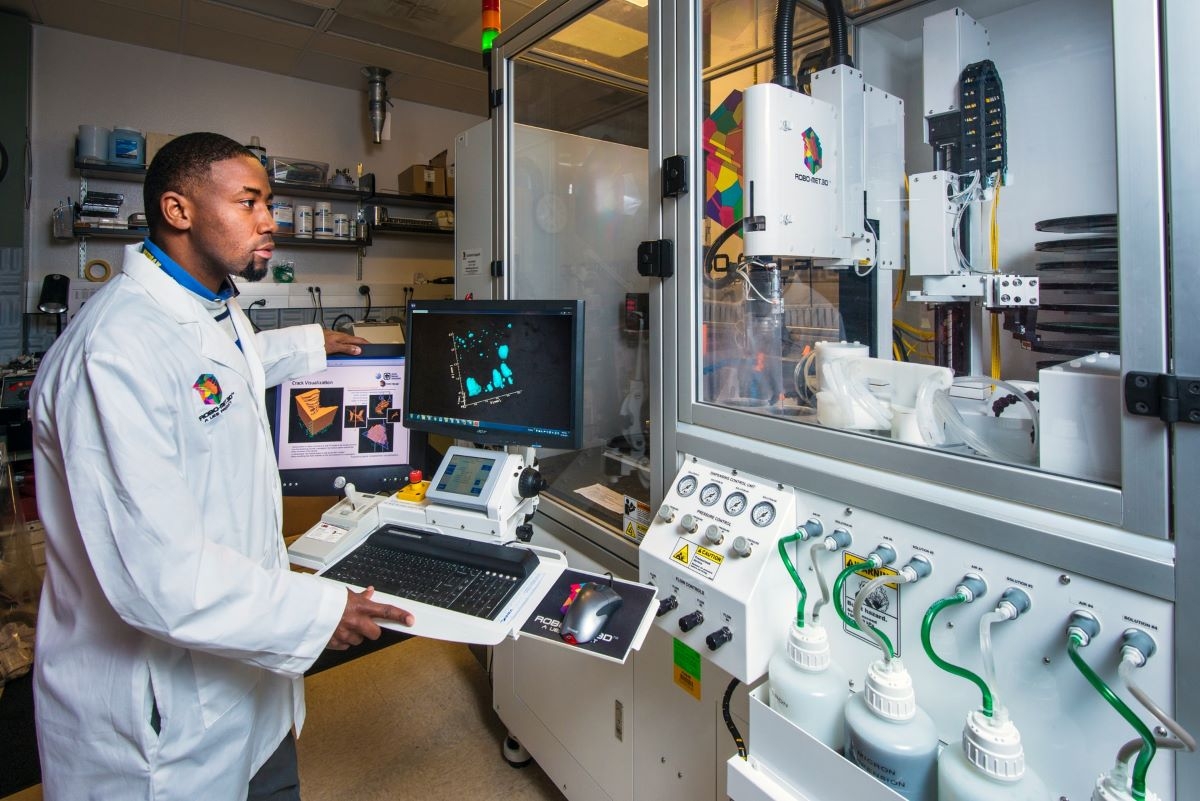
Putting the “Science” in “Science Fiction” – Cyborg Continued
In my last blog, I talked about the exciting advancements being made in the field of medical cybernetics, and the future possibilities cybernetic implants and replacements offer for those who’s bodies have been damaged.
Medical cybernetics are being designed to replace damaged body parts, but the cybernetic systems used by Victor Stone and many other fictional cyborgs go far beyond matching the functionality of human body parts. Many science fiction cyborgs such as Victor Stone, Robocop, and General Grievous have cybernetic parts that have enhanced capabilities compared to their organic originals. Cybernetic augmentations are very common in many works of science fiction, and promise to grant superhuman abilities to any person willing to undergo the surgeries needed to attach or implant them.
Many science fiction cyborgs also possess other pieces of technology incorporated into their cybernetic systems, such as computers, sensors, and weapons. These technologies seem to hold great potential, but there are many problems and limitations with cybernetic augmentations that will limit their use in the real world. In this blog, I will explore many of these problems and issues, although I will not address the possible moral issues people may have with replacing healthy body parts with machinery.

Perhaps the most obvious problem with cybernetic augmentations in the real world is the level of technical sophistication required to create it. In order to create cybernetic augmentations, a control system must be developed that enables a person to use their cybernetic limbs with the same precision and control as they could a flesh and blood one. These systems will lost likely derive from the neural control systems already in development, but will need to be more advanced in order to allow finer control with a much smaller margin of error. This is especially true of cybernetics that are designed to give humans completely new abilities like cybernetic arms with built in tools or weapons. These devices are common in science fiction, but the human body has no means to control them.
Advanced cybernetic augmentations will also need a more sophisticated movement system such as artificial muscles, instead of the simple pistons or hydraulics used by most cybernetics and robotics today. The use of more power efficient systems will also help solve another problem, which is that modern powered cybernetics usually rely on external batteries. Battery technology will have to become more advanced, or a way of drawing power from the human body will have to be found, in order to allow augmentations to become a reality.
Assuming the technological hurdles are overcome there are issues of cost and legality associated with augmentations. Modern cybernetic systems are very expensive, and although this price will continue to drop, augmentations will be very costly once created, due to their sophistication and the procedures required to install them.
Another concern is many augmentations, such as superhuman strength or built in weapons systems, are as dangerous or more than other kinds of weapons. The danger posed will no doubt lead to laws about which augmentations are legal for civilians to own, and mandatory limits will likely be placed on the strength and toughness of civilian augmentations. It is likely that many kinds of cybernetic augmentation will be restricted to government organizations, because this technology would offer many possibilities to the military, police officers and firefighters. Cybernetic augmentations will allow the men and women who perform these dangerous duties to do so more safely and with a higher degree of success than previously possible. The cost and surgery involved with cybernetic augmentation may mean that robotic exoskeletons will prove more cost-effective.

With a few exceptions the cybernetic augmentations portrayed in most works of science fiction are surgically implanted, and this brings with it a number of problems. All surgical procedures carry inherent risks, such as negative effects from anesthesia and slow healing, and these will have to be accepted for someone to undergo cybernetic enhancement of this type. Implanting machines into living tissue also poses challenges, as the human body is a hostile environment for machinery and is constantly undergoing a process of change and regeneration. Cybernetics will have to be built with this in mind in order to prevent damage to the implants, as well as the possibility of the body rejecting the mechanical parts. The opposite concern is also true, as the cybernetic parts must be engineered so that damage or malfunctions they may suffer will not harm the person using them.
A fundamental problem with cybernetic augmentation is despite how powerful a cybernetic part may be ,it is still being attached to a human body. A perfect example of this can be seen in cybernetic limbs that grant superhuman strength. Although a pair of cybernetic arms may be strong enough to lift weights measured in tons, the human body is not designed to withstand such forces. In a similar fashion a piece of subdermal armour, a common fictional cybernetic involving a layer of armour placed under the skin, could stop a bullet but would have a harder time protecting the organic tissue underneath it from the force of impact. Often implanting one cybernetic augmentation requires several secondary implants to achieve its full potential, such an augmented arm requiring the enhancement of the shoulder it is attached to, as well as connective tissues, muscles, and the spine, in order to allow it to be used safely.
More extensive augmentations would require even greater amounts of secondary modifications to make them safely useable. Because of these concerns many science fiction works describe people known as full conversion cyborgs, who have had all their body parts except for life-sustaining organs replaced by machinery. These people gain superhuman abilities in return for replacing their human bodies, but whether that trade off is worth it is up to the individual to decide. Although full conversion is the most complete solution to many of the problems posed by advanced cybernetics the technology to perform such an extreme procedure is still a long way off, and the cost will be astronomical.

There are many reasons why super-powered cybernetics are still a thing of science fiction and not of reality, but as medical cybernetic technology improves augmentations will come closer to being built. It is only a matter of time until current cybernetics cross the blurry line between healing and enhancement, and once that line is crossed it will raise many questions about how much augmentation is acceptable and what truly makes someone human. In the end the most important thing is not what technology we have access to, but to what ends we put it and how we use it to achieve those ends.












